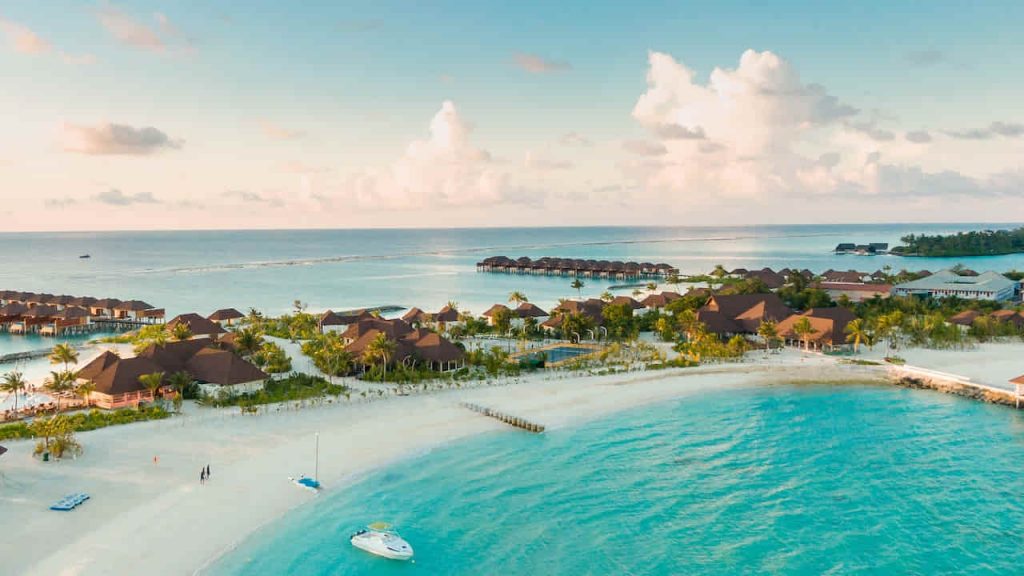
The Republic of Maldives, or Maldive Islands, is a marvel of nature and a unique gift for tourists, the only of its kind on earth.
A spray of 1190 islets is composed of twenty-six groups (Atolls) – only about two hundred are inhabited. These numerous islands are in the sea, like stars grouped in a tiny galaxy in the sky.
This smallest Asian country has a local population of 300’000 only. The Maldives is about 700 kilometer southwest of Sri Lanka in the Indian Ocean between the Minicoy Islands and the Chagos Archipelago.
The original inhabitants were probably casual stray sea travelers and fishermen from Sri Lanka and South West Indian Ports. The earliest settlers are traced back to the Ashokan period in the 3rd Century BC.
The World renowned travelers called it very rightly as Garland of Islands. The Arab Ibn-e-Batuta expressed his appreciation and called it the “Mahal (Palace).”
The aerial view is beautiful to observe and very picturesque. But nature has created this site to stay vulnerable, climatically, with geographic advantages and disadvantages.
Many narrations abound on how the name the Maldive Islands came out of different earlier versions. The foreign language-speaking settlers exposed the local population differently in their times.
In 1558, the Portuguese occupied the Islands. A century later, in 1654, the Dutch superseded them.
Finally, in 1887, it became a British protectorate. The islands gained independence in 1965 and were declared a republic in 1968, with Malé as the capital.
Table of Contents
Quick Facts
| Country | Maldives |
| Coordinates | 4.175292, 73.509497 |
| Area in Square Miles | 115 |
| Population | 400,000 |
| Capital | Malé |
| Location | Indian Ocean |
| Height in Meters | 2 |
| Beauty Rating | 5 |
| Time Zone | Greenwich Mean Time +5 hours |
| Religion | Islam |
| International Dialing Code | 960 |
| Currency | Maldivian Rufiyaa |
| Language | Maldivian (Divehi). English is also widely understood. |
| Flag | The Maldivian flag is green with a red border and a central white crescent. |
| Government Type | Presidential republic |
| GDP – real growth rate | 7.60% |
| GDP – per capita (PPP) | $13,600.00 (USD) |
| National Holiday | Independence Day, July 26 |
History
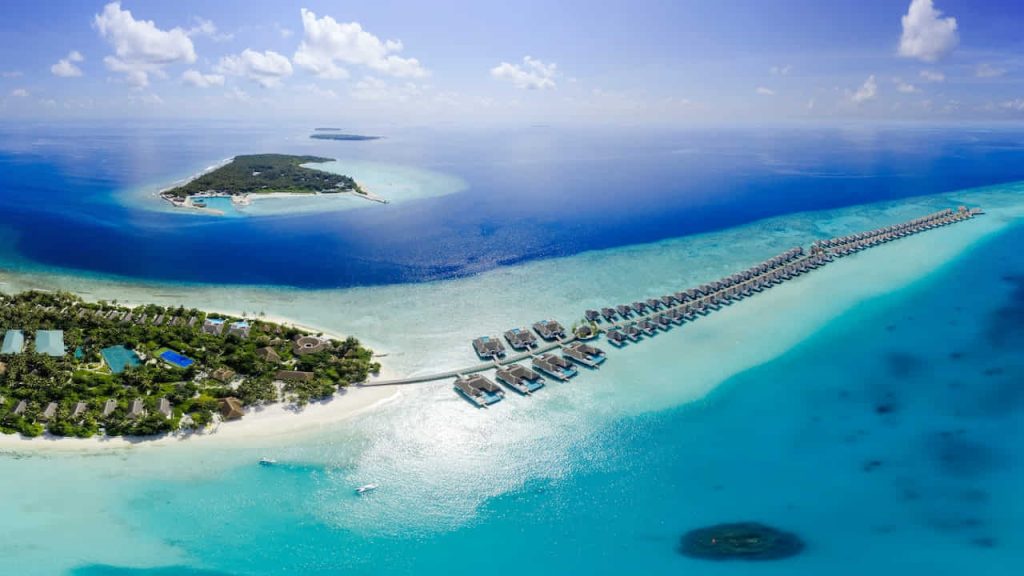
The cultural traditions show that Dravidians from Kerala, Southwest India, and Sri Lankan Tamils first settled around 3000 B.C. Local tales and religious books confirmed that Malé was the leading center for the trade links of varied settlers in these Islands, including Arabs. Another myth relates that one exiled Sinhala from Bengal, Prince Kalinga Vijaya settled somewhere in 550 B.C.
The Maldivian kings promoted Buddhism until the 12 century A.D. This is evident from the carvings of sculptures. The oldest copper-plate book, written in 1194 A.D. Isdhoo Lomafanu, was discovered in the Maldives.
Mr. Bell, a British commissioner of Ceylon, conducted the first archeological study on the early cultures and the Buddhist ruins’, in the Maldives. He asserted that ancient people followed Theravada Buddhism, but Malé’s museum also displayed Mahayana and Vajrayana iconography.
The Tamil Emperor Raja Chola may have invaded the Maldives in the 11th Century.
Another story states that a nobleman Koimala of Lion Race, from Ceylon, reached Malé in the 12th Century A.D. He established a Kingdom and freed the locals from Tamil Chola rule.
Some Arabs claim a queen, Siri Raadha Abaarana (Sultana Khadija), having ruled before Koimala.
Islam was introduced in the Islands by the end of the 12th century A.D. A saint from Tabriz or Morocco subdued a demon (Ramnamaari Dhoveni Kalaminja) and thus converted the people to Islam in 1153 A.D. The sailors from Bengal and Arabian countries also influenced the spread of Islam in the Maldives.
Geography
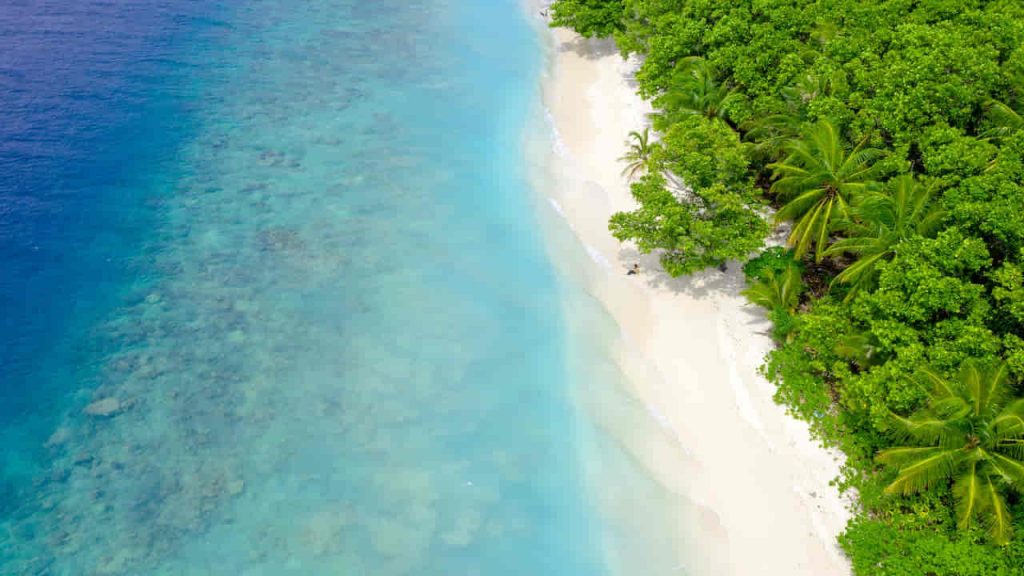
The Maldives is the lowest country, and one of the best vacation spots in the world. The maximum ground level above the sea is eight ft., and the average falls below 5 ft.
This dangerously low land cannot stop the sea waves from flooding, even in mild storms. This eternal threat of existence comes from the Indian Ocean.
Global warming is posing another danger of drowning. The sea level has risen by 8 inches so far.
The people and the President, Muhammed Nasheed, seeing no alternative to the ultimate devastation, have decided to buy land and create settlements in Sri Lanka, South India, or maybe Australia.
The Islands consist of reefs of live and dead coral. The reefs’ parallel line setting dissipates high waves acting as wave-breakers.
Moreover, the soil consists of a six-inch top layer of hummus and two ft. of sandstone below it, then sand and fresh water.
The high salt ratio limits vegetation in the soil, and the small variety of plants includes banyan, mangrove, and mostly coconut palms, with some seasonal flowers and shrubs.
The 300’000 inhabitants occupy only 1% of the 90’000 sq. km. of land. Out of 1190 islets of the archipelago, only 200 are inhabited.
The others are used for tourism resorts and agriculture or are simply unusable, being too small or unviable for commercial use.
Tsunami
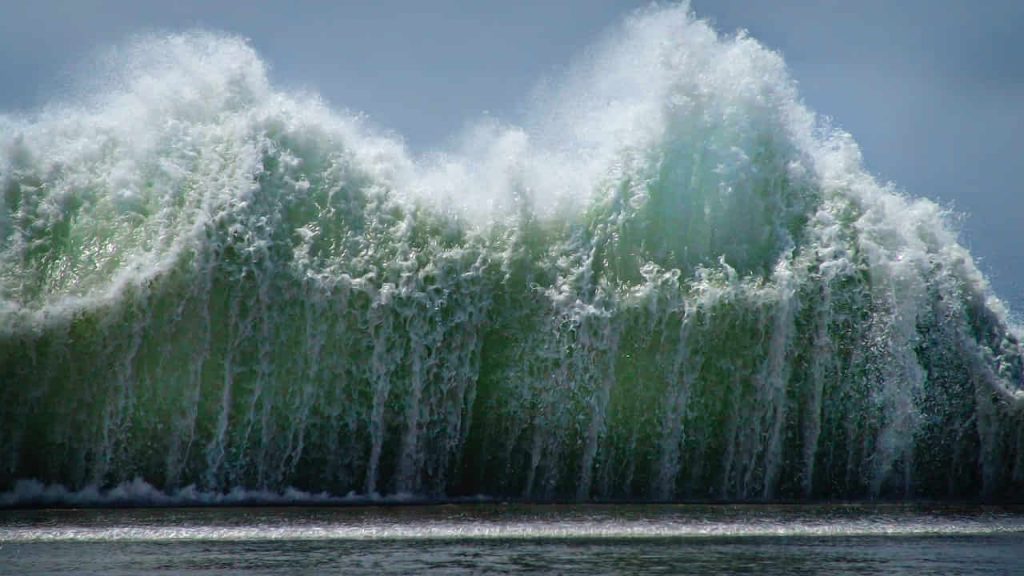
The Tsunami in the Indian Ocean earthquake in December 2004 caused severe and irreparable environmental damage.
It devastated infrastructure, which left thousands homeless and jobless. The Maldives suffered a loss of around $500 million, and about a hundred people died.
The unique natural protective aspect observed was that the vast waves couldn’t gain height without any continental shelf around the Islands to support them.
The impact was mitigated by the numerous Islands placed in a specific style. The tallest waves reported were below 15 ft. – only six islands could avoid flooding.
The Climate
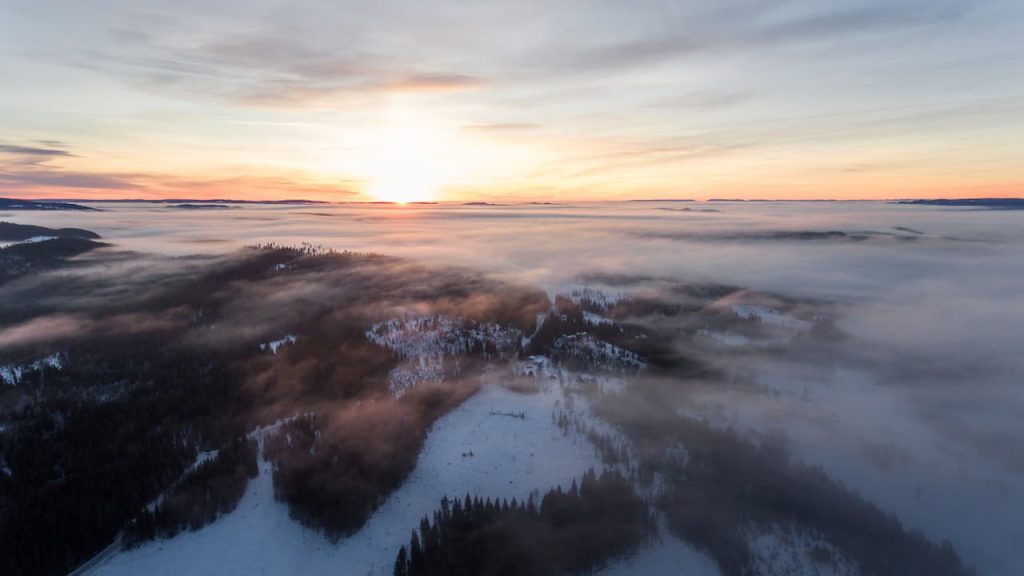
The Maldives has a tropical climate that is warm and humid all year and is affected by two dominant monsoons.
Because the Maldives is positioned on the equator, it receives plenty of sunlight all year. Throughout the year, temperatures in the Maldives fluctuate from 25° C to 32° C.
From December through April, the dry season (northeast monsoon) occurs. Simultaneously, the rainy season (southeast monsoon) lasts from late May until November.
Independence and Republic of Maldives Declaration
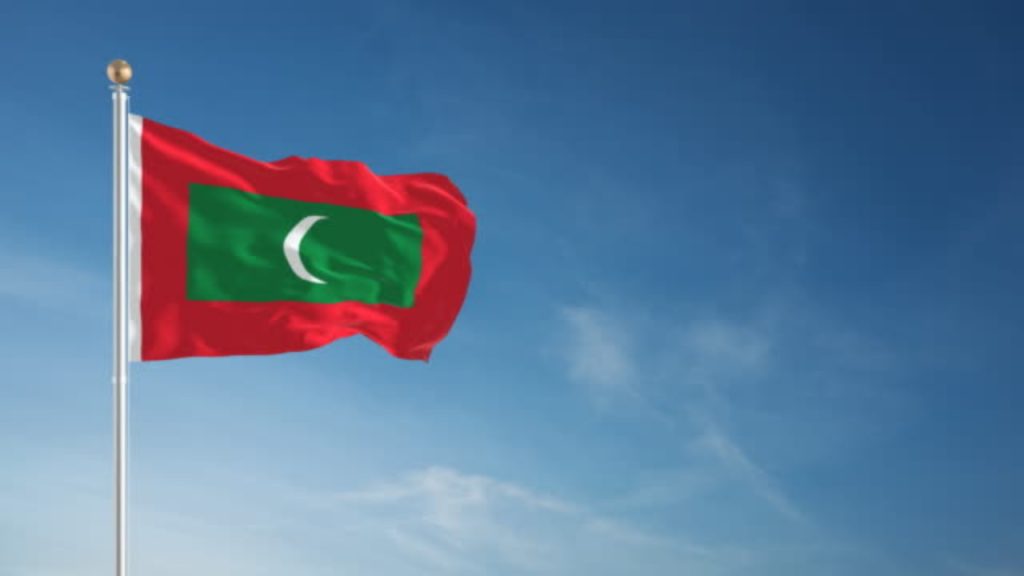
Maldives was an independent Islamic Sultanate from 1153 A.D. to 1958, with a British protectorate from 1887 till 25th July 1965.
Britain attained complete political independence on 26th July 1965, but King Muhammed Fareed Didi continued to rule for three more years.
On 11th November, the monarchy was abolished, declaring it the Republic of Maldives. The first president was Ibrahim Nasir. Political tussle came about between rival factions in 1975, and Nasir fled to Singapore in 1978 with millions of dollars.
Maumoon Abdul Gayoom took over as president. He successfully won five-year terms in a stretch to complete a 30-year rule without opposition.
However, during these years, he survived three tough coups with the help of the Indian Government. During this stable period, the Maldives developed a lot.
Economy, Tourism, and Industry
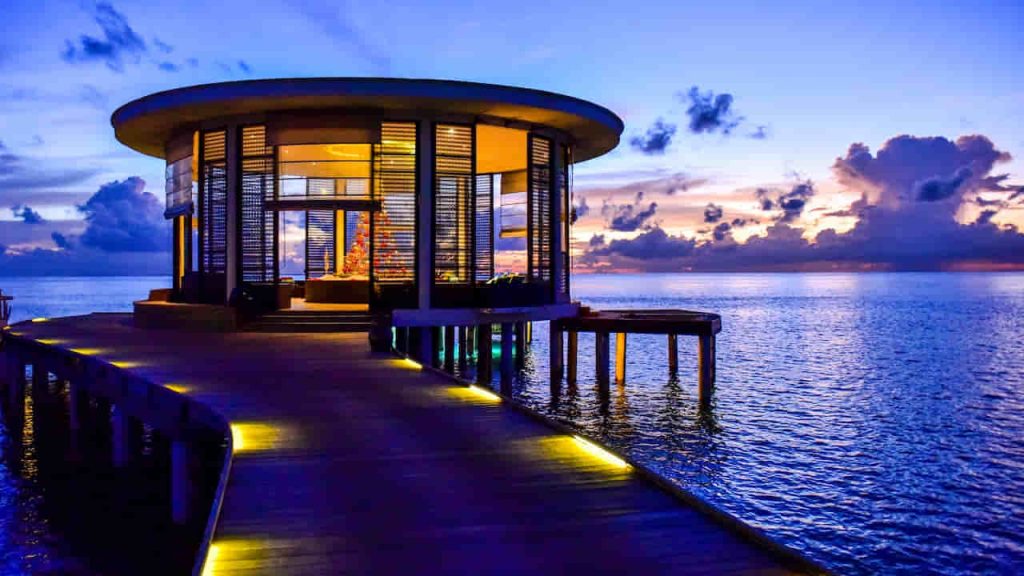
The Lavish Economy
The Arabs dominated the Indian Ocean trades in the 2nd century A.D. They called these “Money Islands,” famous for cowry shells, coir rope, tuna fish, and cocoa.
Cowry shell is known to have been used as international currency once and is now a symbol of the Maldives Monitory Authority.
The Maldives Government is initiating reforms to improve tourism, which generates significant shares of taxes and GDP (30%) and dominates foreign exchange earnings (60%).
The Government is liberalizing regulations to allow foreign investments. Amazingly this smallest country had the highest per capita income of $4600 in 2007 amongst South Asian countries.
Tourism Sector
The first tourist resort was opened in 1972 in Kurumba village and Bandos Islands. Today about a hundred such resorts are operating with a bed capacity of about 20’000, offering the latest facilities.
The Maldives attracts over 600’000 visitors annually. The traditional fishing boat Dhoni was mechanized in 1974, which developed the fishing industry manifolds. This necessitated the installation of a fish canning plant with the help of a Japanese joint venture.
The Industry
Tourism based cottage industry is also gaining momentum – the traditional matt weaving, lacquer work, handicrafts, garment construction, bottling of aerated water, and so on.
The fisheries sector was improved by opening up of Exclusive Economic Zone (EEZ), expanding technical education on fisheries to the public in the school curriculum.
Airports in the Maldives
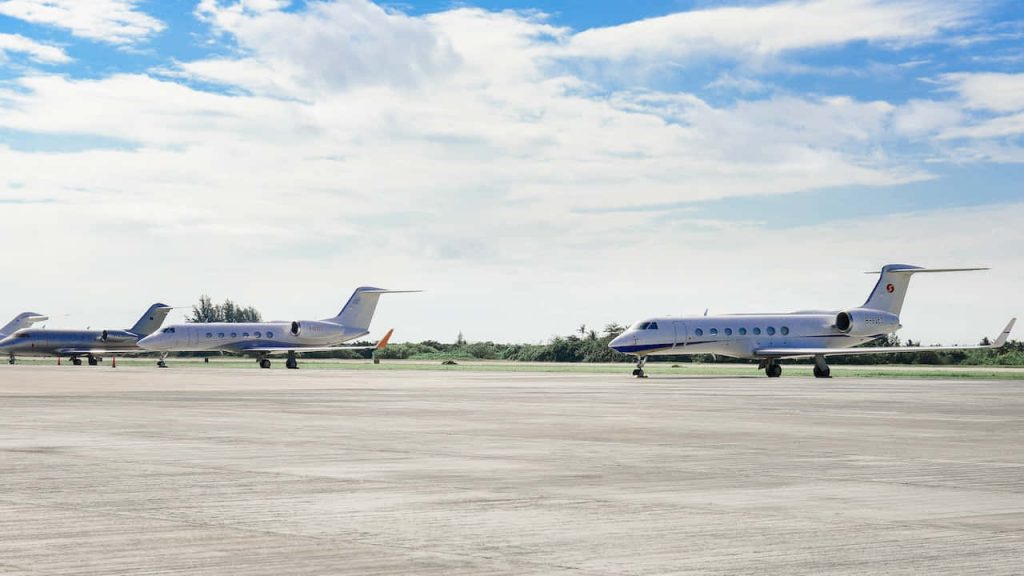
The Velana International Airport (code MLE), which serves Malé, the Maldivian capital, is where most visitors arrive.
There are three more international airports that serve various islands:
- Gan International Airport (GAN)
- Villa International Airport (VAM)
- Hanimaadhoo International Airport (HAQ)
There are several domestic airports as well, which include:
- Ifuru Airport (IFU)
- Dhaalu Airport (DDD)
- Kooddoo Airport (GKK)
- Kadhdhoo Airport (KDO)
- Fuvahmulah Airport (FVM)
- Thimarafushi Airport (THF)
- Kaadedhdhoo Airport (KDM)
- Dharavandhoo Airport (DRV)
The 2008 Elections
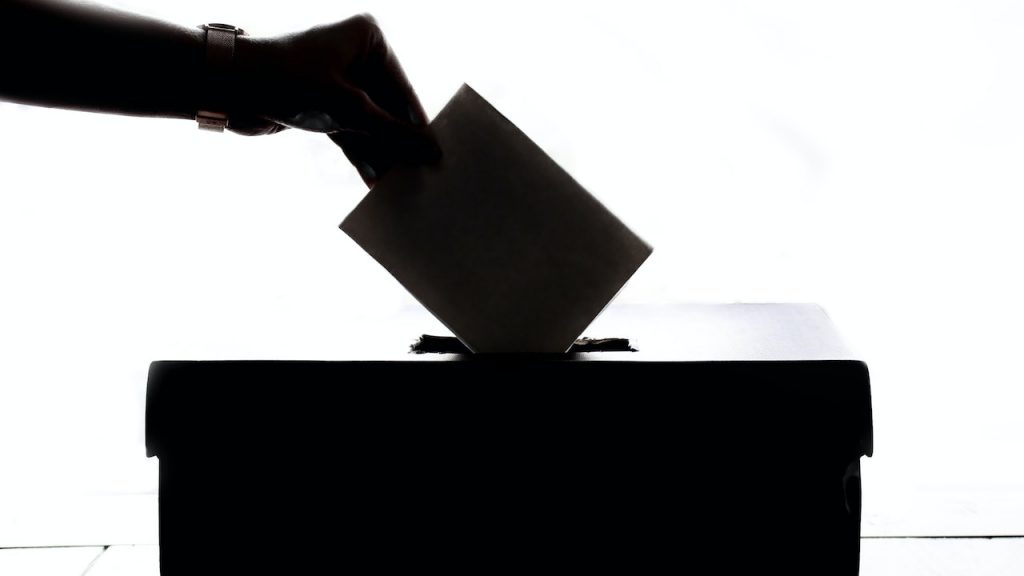
Violent political protests in 2005 led to a new political two-party system and a multi-candidate election.
In 2008, Muhammed Nasheed won the Presidential election by 54%, with Dr. Waheed as Vice President.
This elected democratic government is restoring order in the Islands and fulfilling ignored projects. After the Tsunami devastations, the new government has much more difficult challenges to face, like unemployment, corruption, drugs among youth, and above all, rising sea levels due to global warming.
Many Islands carry similar names. Code letters or words are added before each Island name to facilitate communications.
Although this system proved successful, some foreigners need clarification and are unfamiliar with local names and languages.
The Maldivian Society
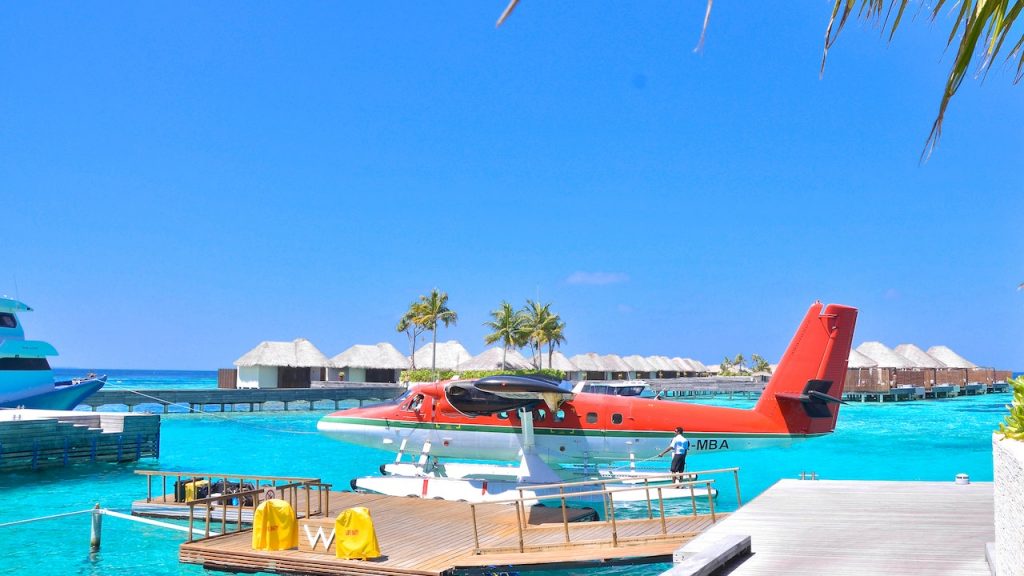
Maldivian identity is a mixture of cultures and languages adopted from varied settlers. Religion also influenced a lot.
A person’s social status depends upon his occupation, Islamic virtue, and wealth instead of the typical rigid Indian caste system. The social elite is centered on Malé mainly.
The tourist resorts are built on Islands accessible to the native population, discouraging casual contact.
The consensus since 1905 shows a static local population of around 100’000. But after independence in 1965, the health conditions improved.
The population doubled by 1978. By 2007 it crossed 300’000. The significant factors are the decline in infant mortality rate from 27/1000 in 1978 to 12/1000—furthermore, life expectancy increased from 46 years in 1978 to 72 years in 2007.
Adult literacy stands at 99%. Since 2008 over 100’000 foreign employees also live in Maldives, coming from neighboring countries, to fill in the human resources shortage.
Final Words
The Maldives is, without a doubt, one of the fascinating tropical places. It initially gained popularity among jet-setting celebrities a few years ago, especially among couples seeking a romantic vacation!
However, the number of airlines that fly to the Maldives has increased, making them more inexpensive and accessible. It’s also a fantastic family holiday destination, with many Maldives resorts offering family-friendly lodgings and exciting activities.
There are over 130 Maldives resorts, each with its bit of paradise. We’ve compiled all of the Maldives information you’ll need to start arranging your luxury travel holiday!
I’m looking forward to getting more information about this topic, don’t worry about negative opinions.
Thanks because of this valuable content. As a practicing buddhist, recreation specialist as well as Yoga lover, I actually admire the balance of effort you’ve put into this article. Found it throughout Yahoo so I really expect, some others will find it as useful as I do.
I must say, I love your blog. Could tell me how I can go about subscribing with it?